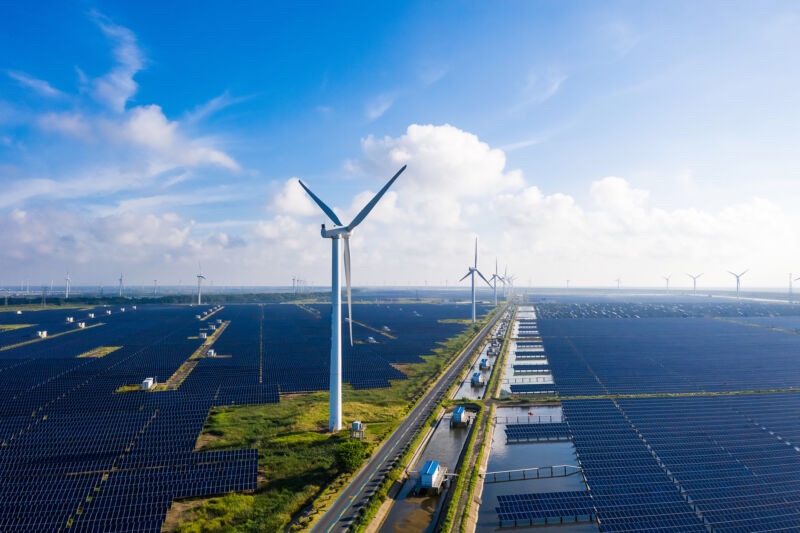Researchers from Tsinghua University in Beijing, Nankai University in Tianjin, Renmin University of China in Beijing and Harvard University in the USA have found that solar energy could provide 43.2% of China’s electricity demands in 2060 at less than two-and-a-half U.S. cents per kilowatt-hour. For comparison, coal power tariffs in China ranged 3.6 to 6.5 cents per kilowatt-hour in 2019. The research was published as the cover article of the Proceedings of the National Academy of Sciences (PNAS).
This study is significant as it demonstrated:
“Solar photovoltaic power is gaining momentum as a solution to intertwined air pollution and climate challenges in China, driven by declining capital costs and increasing technical efficiencies. The dynamic spatial trajectory of cost-competitive and grid-compatible penetration potentials for solar power will be a critical determinant of the speed of energy system decarbonization in China. ” **
“This study develops an integrated model to assess solar photovoltaic potentials and their cost competitiveness throughout 2020 to 2060 considering multiple spatiotemporal factors. We find that the cost competitiveness of solar power allows for pairing with storage capacity to supply 7.2 PWh of grid-compatible electricity, meeting 43.2% of China’s demand in 2060 at a price lower than 2.5 US cents/kWh.” **

Xi Lu, Associate Professor, School of Environment, at China’s Tsinghua University and co-author of the paper said “Today, subsidy-free solar power has become cheaper than coal power in most parts of China, and this cost-competitive advantage will soon expand to the whole country due to technology advances and cost declines. … Our results demonstrate that the economic competitiveness of solar power combined with investments in storage systems could provide extra benefits for grid dispatch, which will be especially important for operation of future electric systems in China.”
According to Michael McElroy, Professor of Environmental Studies at the Harvard John A. Paulson School of Engineering and Applied Sciences (SEAS) and a co-author of the study, the study’s findings highlight a crucial energy transition point where solar power and storage systems will become a cheaper alternative to coal-fired electricity and a more grid-compatible option. This is not only the case for China, but other countries.
The research team developed an integrated model to assess solar energy potential in China and its cost from 2020-2060. The model first takes into account factors such as land uses throughout China, possible tilt and spacing of solar panels, and meteorological conditions like solar radiation and temperature to estimate the physical potential of solar power across both space and time.
The team then integrated the investment costs and speed of technological changes to capture the evolving cost-competitiveness of solar power relative to coal power now and in the future. Building on this foundation, the study developed an hourly optimization model to evaluate the additional costs of power storage systems needed to smooth the variations of solar output so that it can be integrated into the grid to match electricity demand.
The researchers first found that the physical potential of solar PV, which includes how many solar panels can be installed and how much solar energy they can generate, in China reached 99.2 petawatt-hours in 2020. This is more than twice the country’s total consumption of energy in all forms, including not only electricity but also fuels consumed directly by vehicles, factories, building heating and more. The findings show solar PV is an enormous resource for China’s decarbonization.
Dr Shi Chen, a co-author of the paper and a visiting fellow at the Harvard-China Project said “Our research shows that if costs continue to decline, especially for storage, there could be opportunities to power vehicles, heat or cool buildings, or to produce industrial chemicals, all using solar energy. This would extend the climate and environmental benefits of solar energy far beyond the power sector as traditionally conceived.”
SOURCES:
** Xi Lu et al, “Combined solar power and storage as cost-competitive and grid-compatible supply for China’s future carbon-neutral electricity system”, Proceedings of the National Academy of Sciences (2021). DOI: 10.1073/pnas.2103471118
TechXplore, “Solar energy can be cheap and reliable across China by 2060, research shows”, 19 October 2021, https://techxplore.com/news/2021-10-solar-energy-cheap-reliable-china.html
Leave a Reply
You must be logged in to post a comment.